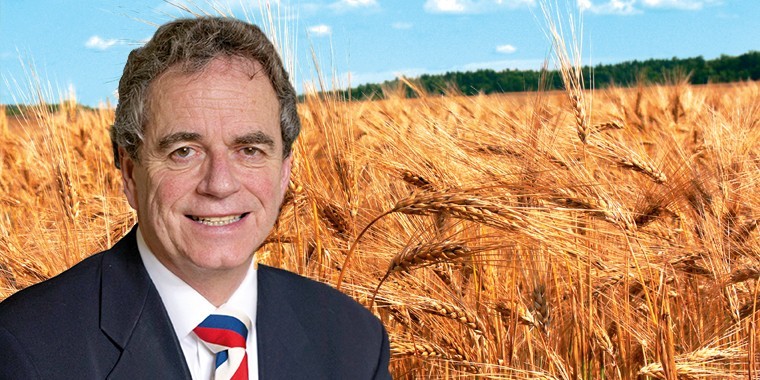Without doubt, some wheat growers in the South, including the Thames Valley, up to Bedfordshire, Buckinghamshire and Northamptonshire, enjoyed record yields of both first and second wheat. Bushel weights, protein, and Hagberg – apart from the last combined – were good.
There is a huge difference between the DEFRA UK wheat crop figure of 16.4 million tonnes and trade estimates of 15.4 million tonnes. The ministry think the planted area for wheat increased by 4%; together with the record yields of 2015 this would give a 3.5 million surplus. Taking the more modest trade estimate of a 2.5 million tonne surplus, in an ordinary year – without Brexit – disposing of this would be considered quite achievable, especially as the UK has been the cheapest source in the world since harvest.
This was helped a lot by sterling being at record lows against the US dollar. However, the currency advantage has now been eroded as the pound has strengthened from 92.5p in August to only 88.5p on 20 September. Despite this, it’s estimated that about 850,000 tonnes of wheat will have been shipped by the end of October and this may rise to one million tonnes.
As a Brexit deal or extension looks more likely sterling appreciates but, that could all go wrong yet. If we crash out, sterling will fall through the floor, with a consequential rise in export values.
World demand for UK wheat continues into the New Year, but we won’t remain the cheapest forever. There are strong indications that one of the Northern ethanol plants will shortly start manufacturing spirit again. That could add another 500,000 mt to the UK demand. Maybe the relatively cheap value of domestic wheat is driving that, it’s certainly a lot cheaper than when the plants were last in full production.
UK wheat has actually bounced off the bottom reached at the end of August. Futures have now recovered about £8 per tonne from that low point. This recovery is partly due to the fact that UK wheat has been trading at a large discount – sometimes 20 euros – below French futures. So this meant that some of that ‘slack’ could be taken up by the recent price rise; with the UK still remaining competitive with all other sellers. Some wheat growers have talked about ‘closing the barn door’ now harvest is over in an attempt to starve the market, and hopefully drive up spot prices.
In my opinion, that is not a good strategy this year! Quite simply, the UK has too large a surplus for this to work, and by the way, so has Europe and the rest of the world.
During August, Brexit fears resulted in a depressed pound. This coupled with the rush to maximise exports before 31 October created an impression of frenetic seemingly never ending exports, but that could all stop! So keep selling: most of you will have some good early sales to average lower spot values with.
After the record 2015 harvest, even with a normal 10 month export year, wheat fell to about £100 ex in November, some £25 lower than it is today. UK barley is in a similar position. The ministry estimates a 1.9 million tonne surplus. We think the exportable surplus is only 1.5 million tonnes but, that is still a large tonnage to liquidate, especially if we do leave without a deal on 31 October. This would curtail our ‘bread and butter’ coaster trade to Spain and Ireland, leaving us to compete with all the Black Sea ‘cheap Jack’ sellers competing for the big boat third country trade.
We have done more than our fair share of malting barley exports but I cannot see there being more than 150,000 mt shipped by the end of October: so that still leaves about 1.3 million tonnes to go. Malting barley premiums are only £10 to £15 over feed but if you have the quality it is still advisable to get that onto a boat before 31 October.
Feed barley has been put under pressure by the USA shrugging off its alleged maize crop crisis! They will have a smaller crop. In fact, the southern states have already begun combining, and yields are not great. However, huge potential crops in South America and elsewhere have offset any shortfall in the USA.
So, by the time you read this, we will be into the last three weeks, counting down to 31 October. Of course anything could happen yet, but this is not the year to have the majority of your crop unpriced in these unprecedented circumstances.




